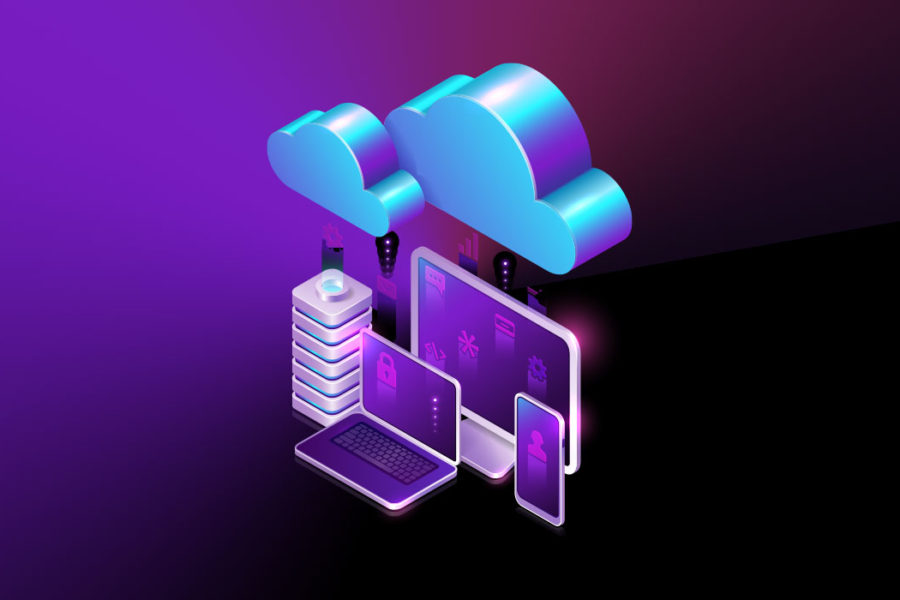When we hear the world online, then the term cloud computing rings a bell in our head. In layman’s terms, cloud computing refers to the delivery of services over the internet aka the cloud, in order to encourage feasible, faster and more innovative methods. If you’re thinking of shifting your business over the cloud, then you will have to learn about the different types of cloud computing in order to make optimum choices. There are three types of cloud computing:
- SaaS- Software as a Service
- PaaS- Platform as a Service
- IaaS- Infrastructure as a Service
As more and more businesses are moving online, these terms have started to gain popularity. You’ve probably heard these terms before or right now they just sound like a bunch of letters. Either way, we’ve covered the different aspects of these three types in our article so you don’t hesitate the next time someone mentions these terms.
OVERVIEW OF SaaS
This service usually comes at a cost in the form of a monthly subscription fee. However, this cost comes with its added advantages for instance your maintenance and security costs are covered by your subscription fee. When you opt for SaaS, your web-host will be a third-party and all platforms offered will be available over the internet.
If you’re someone who is looking to put in minimum effort in your platform and want to yield maximum results, then SaaS is the right way to go. It offers smooth and reliable operations with very little effort. For instance, making sure that your application is up to date or is not lagging will not be your headache if you choose SaaS. The burden of these responsibilities will fall on the shoulder of your provider. More often than not, SaaS carries out these responsibilities on its own but in the rare instances when the issue doesn’t go away, then your provider will have to deal with it, not you.
This is just one of the many advantages of using SaaS. Other advantages include not going through the hassle of installing and running different applications on the computers in the workplace and then making sure the computers are kept in line with all upgrades. Since everything is available online, you can access your information by just logging in to your account and you don’t need any particular device for this. Another major advantage is that there are no hidden costs that come with purchasing SaaS. Another feature of SaaS that sets it apart is its ability to transform itself depending on whether your business is on a small, medium or large scale which makes it a more flexible choice. BigCommerce, Dropbox, Google Apps all use SaaS.
OVERVIEW OF PaaS
PaaS is an ideal choice for people who are looking for an inexpensive service. However, you should only opt for PaaS if you are a developer since the software and hardware tools are made available over the internet and you can then use these tools to develop your application. This gives you more control over the application that you are building and saves a lot of time due to the availability of tools.
It is becoming an increasingly common choice due to its customization factor. Similar to SaaS, you don’t have to worry about the responsibility of ensuring that your application runs smoothly thus saving you from carrying out menial tasks.
The platform itself is accessible by multiple users and you don’t need to have an in-depth knowledge about administrative systems for smooth operations. Another advantage of PaaS is that it gives you the option to create your application depending on the scale of your business. However, one drawback of using PaaS is that the solutions offered by your service provider might not be the optimal solutions for your application due to the built-in customization of your app. Examples of PaaS include AWS Elastic Beanstalk, Windows Azure, OpenShift.
OVERVIEW OF IaaS
The third and last type of cloud computing is IaaS. As the name suggests, IaaS provides you with a virtual infrastructure which makes it less labor and capital intensive. The amount of money you spend on IaaS depends on the services you purchase which makes it very cost-effective. IaaS is also scalable depending on the requirement of your business and as your business expands or shrinks, you can change the scale accordingly. Similar to PaaS, IaaS is also accessible by multiple users.
If you’re planning to purchase IaaS, you will have complete control over your operations and infrastructure as self-service is a main feature of this service. It is a safer and cheaper alternative to physical hardware and IT infrastructure. Another advantage is the on-going support that is available to the users. The scaling up and down feature of IaaS is very beneficial as it doesn’t require a fresh start and so your initial investment doesn’t go down the drain. IaaS gives you maximum transparency and control without requiring you to be a computer genius which makes it an ideal choice for people who want to have complete authority and control. Common examples of IaaS include DigitalOcean, Rackspace, Amazon Web Service and Microsoft Azure.
DIFFERENCES AMONGST SaaS, PaaS and IaaS
The most striking difference rises through the services that are offered; SaaS offers software, while PaaS offers platforms and IaaS offers infrastructure. Due to the different services that are being offered, there is also a difference in the availability of tools. SaaS users are provided with software, PaaS users obtain runtime environments and deployment tools for their applications whereas IaaS users receive access to virtual alternatives for storage, machines etc.
CONCLUSION
Choosing SaaS, PaaS or IaaS is a question of the kind of services you’re seeking. Just hearing the full form of an acronym is often not enough to comprehend the grasp of a service that is being offered to us however, after reading this article, we hope you learn enough that’ll help you make a decision about the service you want to pick.





Leave a Comment